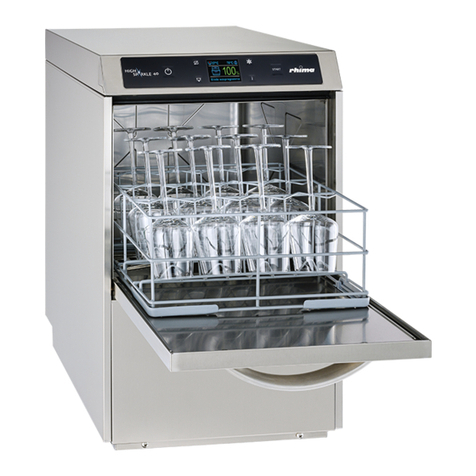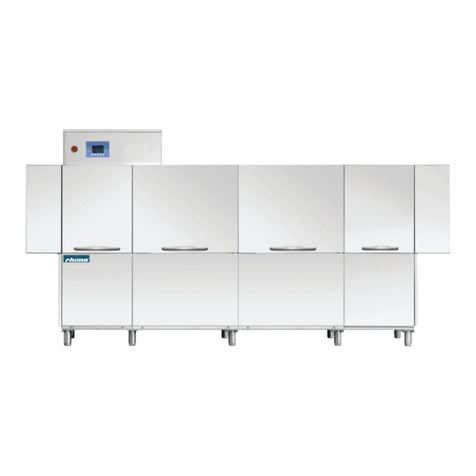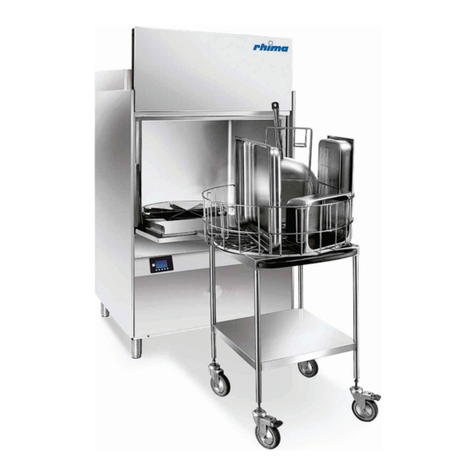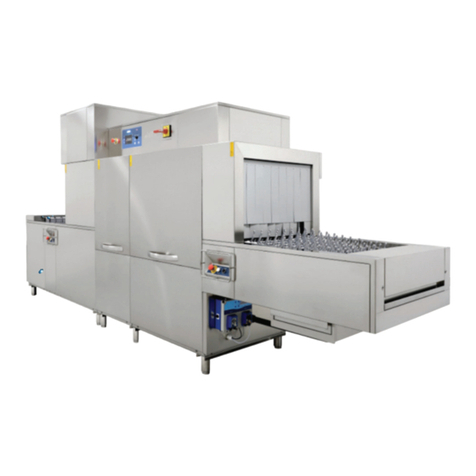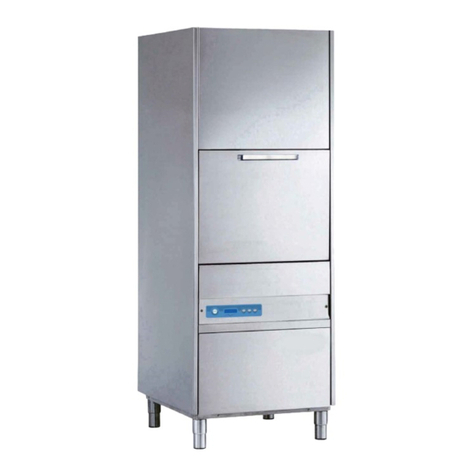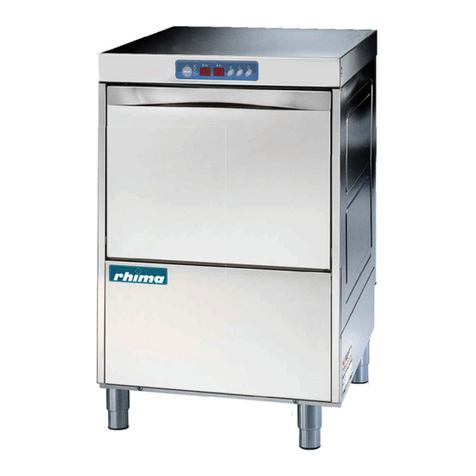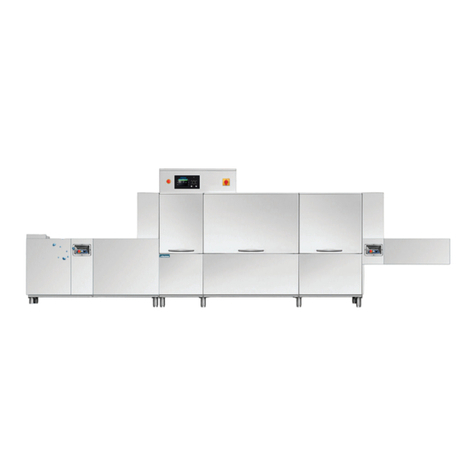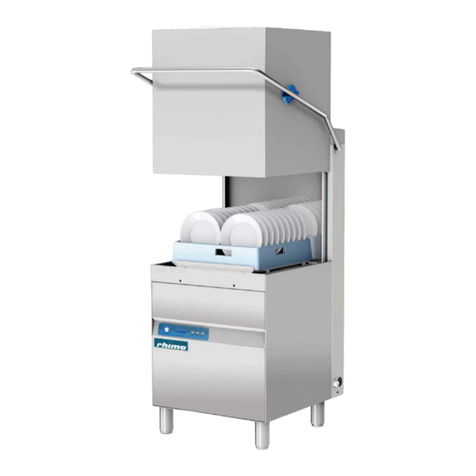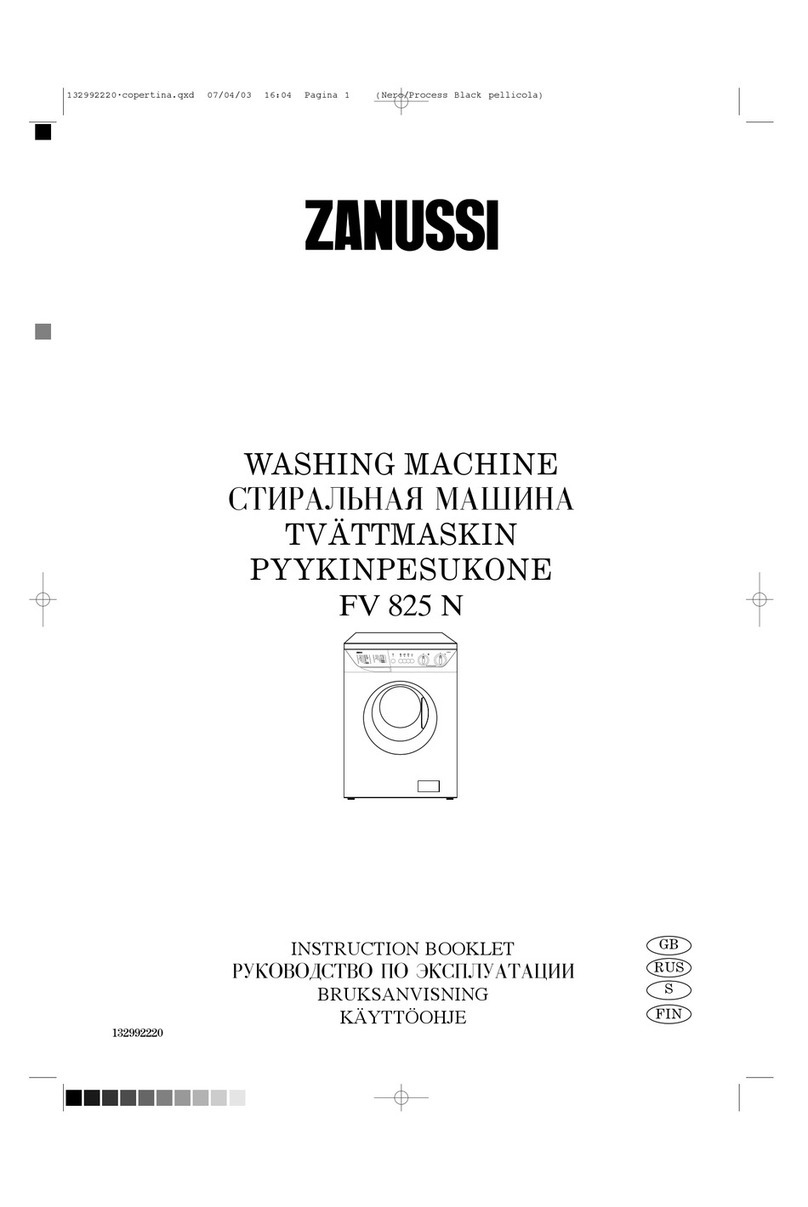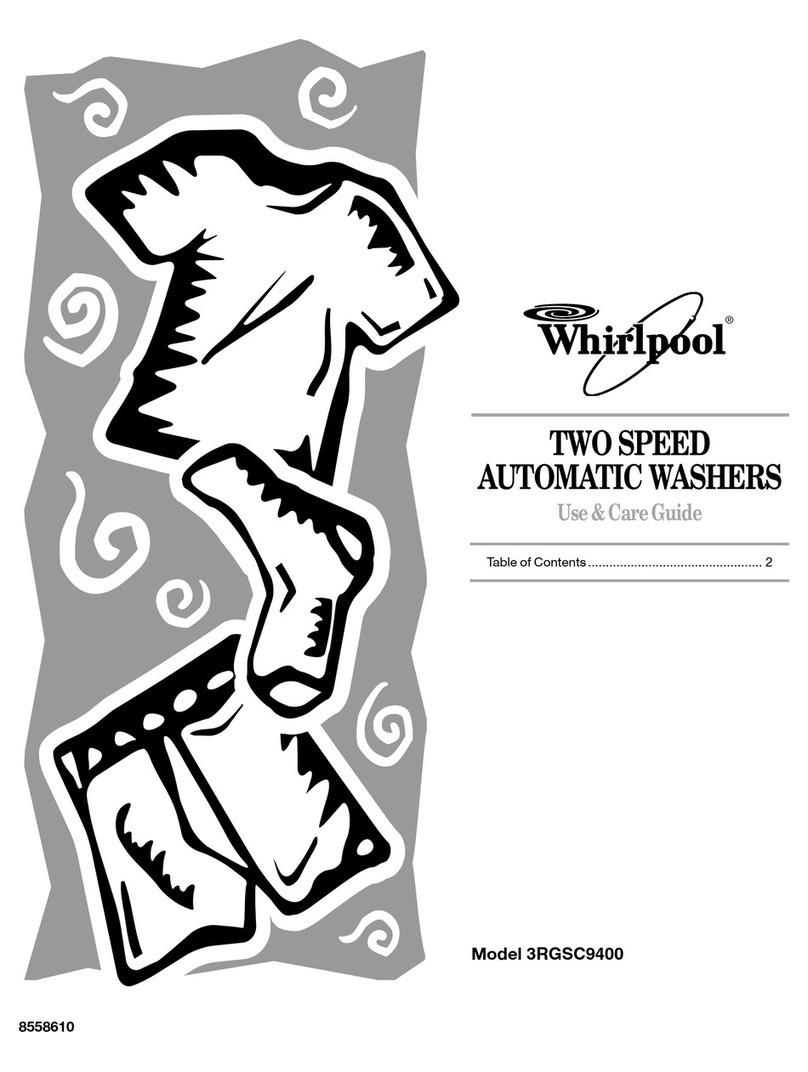
ECOLOGICAL ASPECTS
Recommendations for optimal use of energy, water and additives
Use the machine fully loaded when possible: This shall prevent detergent, rinse aid, water and energy consumption waste.
Detergent and rinse-aids: Use detergents and rinse-aid chemicals with high biodegradability, to best respect the environment.
Verify proper dosage in relation to water hardness at least three times a year. Excess product pollutes rivers and seas while
an insufficient dose results in unsatisfactory objects washing and/or hygiene.
Boiler and Wash-Tank temperatures: The boiler and tank temperatures are set by the manufacturer in order to obtain the best
washing results with detergents on the market. The temperatures can be reset by the installer in relation to your detergent.
Pre-washing: Carefully pre-wash with a moderate amount of water at room temperature to facilitate the removal of animal
fats. To remove encrusted materials warm water soaking is recommended.
Note: Wash objects as soon as possible to avoid deposits from drying and compromise effective washing.
For effective washing routine dishwasher cleaning and maintenance is advised.
Disregarding the points listed above and of any the information contained in this manual can cause energy, water
and detergent waste with a subsequent increase in running costs and/or performance reduction.
H.A.C.C.P. AND HYGIENE REGULATIONS
• When starting the machine ON, no wash-cycle will be starting until the set boiler and wash-tank temperatures are reached.
During operation, the machine will not start the rinse cycle till the set boiler temperature is reached.
• Remove carefully all solids from the objects to be washed, to avoid obstruction of filters, nozzles and piping.
• Drain the wash tank and clean the filters at least twice a day.
• Check if the detergent and rinse-aid dosage are correct (as recommended by the manufacturer). In the morning, before
starting the machine, check that the quantity of chemicals in the canisters is enough for daily supply.
• Keep your working tables clean.
• Extract the rack with clean hands or gloves to avoid finger marks.
• Do not dry or polish the washed objects with cloths, brushes or rags that are not sterile.
WARNINGS:
• Do not slam the door when opening and closing.
• Do not put material or objects on the machine.
• The machine has an IP (see serial number label on the machine) protection rating against accidental water splashes
and is not protected against pressurized water jets. Pressure-cleaning systems shall, therefore, not be used on this
machine.
• Do not dip bare hands into water containing detergent. If this should occur, wash them immediately with plenty of water.
Check the safety instructions on the detergent container.
• Some important rules must be followed for using this appliance:
1) never touch the appliance with wet hands or feet;
2) never use the appliance when barefooted;
3) do not install the appliance in places exposed to water splashes.
• This machine must be disconnected from the main electrical supply after use at the end of the day and for any
service/maintenance operation. Switch off the main switch located on the wall, which shall be installed by a
professional installer. Shut the water supply valve(s).
• Do not cover the intake or dissipation grids.
• Do not use water to extinguish fires on electrical parts.
WARNING: INTERNAL CLEANING OF THE MACHINE SHALL BE CARRIED OUT AT LEAST 10 MINUTES AFTER
THE POWER SWITCH HAS BEEN TURNED OFF.
WARNING: DO NOT INSERT HANDS AND/OR TOUCH THE PARTS LOCATED AT THE BOTTOM OF THE WASH
TANK AND/OR AT THE END OF THE WASH CYCLE.
8
